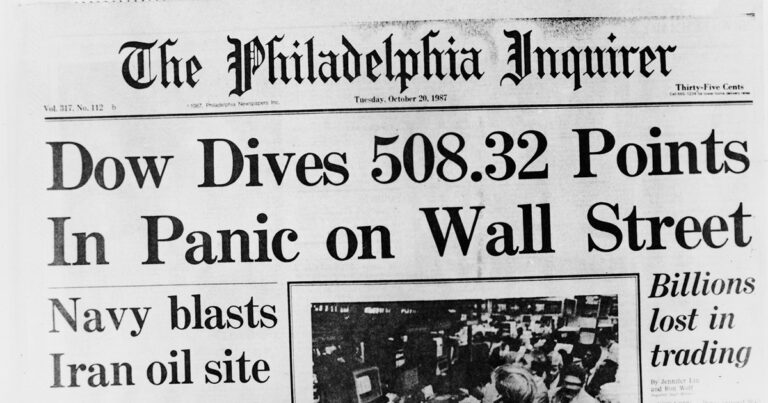Many of your clients have been rattled by the recent market volatility. Headline writers like to use terms like “unprecedented” and “uncharted,” but this isn’t the first time that tariffs have shaken the financial landscape and people’s sense of well-being. It probably won’t be the last. As with so many other crises, the markets will adjust, and we’ll get through the turbulence. But clients should know the recent pause in trade tensions—and market rebound—is temporary. Volatility will likely be the norm, not the exception, for the foreseeable future. They should know it might not be safe to go back into the water yet.
Most financial advisors and sophisticated investors understand that tariffs are essentially a tax on imports. Governments impose this tax to protect their industries and to generate revenue from the importers. Tariffs often cause a ripple effect across economies as supply and demand pressures disrupt the supply chain and Adam Smith’s “invisible hand” takes control. This often causes unintended consequences when the financial markets go crazy, prices change to reflect the new reality, and exports decline. Higher prices reduce purchasing power and overall demand for products. This slows down the movement of money, which is often a precursor to a recession.
Tariffs have historically reshaped stock market trends, often triggering significant periods of volatility and economic reallocation of assets and economic power. But the outcome is not always negative for savvy investors and their advisors.
Let’s see how past tariff-driven market corrections have played out, and what lessons we can share with clients to help them navigate the current landscape:
1. The Smoot-Hawley Tariff Act (1930) was one of the most infamous examples of tariff-driven disruption, as America raised duties on over 20,000 imported goods.
Impact: In response, other nations retaliated, causing a collapse in international trade and exacerbating the Great Depression. The stock market lost nearly 90% of its pre-crash value by 1932, and it took years for the markets to recover. Many called the Smoot-Hawley Act the catalyst for turning a recession into a depression.
2. U.S.–Japan Trade Wars of the 1980s In more recent years, the U.S. imposed tariffs on steel, Japanese cars and other goods that Japan was selling in large volume in the U.S. while blocking American-made products in Japan.
Impact: Uncertainty caused volatility due to the fear of retaliatory measures from the affected nations. Japan did not retaliate as aggressively as expected, although it restricted American agricultural exports, reducing markets and incomes of U.S. farmers. Because this was a managed response, U.S. stocks continued rising until the crash of October 1987. But that crash was primarily caused by portfolio insurance gone awry rather than a reaction to trade policy.
3. The U.S.-China Trade War (2018-2019). Under Trump 1.0, the administration imposed tariffs on Chinese imports, causing China to retaliate in kind. Unsurprisingly, uncertainty in global markets caused stock prices to become quite volatile, particularly in industries reliant upon international trade.
Impact: The stock market impact was similar to today. Every time a new tariff was announced, stocks took a nose-dive. But whenever there are signs of “trade talks going well,” stocks rallied. Sound familiar?
In late 2018, the S&P 500 fell nearly 20% from its peak, largely due to trade concerns, global growth fears, and tightening monetary policy. Industrial and technology stocks were particularly affected due to their reliance on global supply chains. But it cleared the way for a robust bull market in stocks (up nearly 30% in 2019) that continued until the pandemic stopped the world in early 2020.
Recurring patterns
Retaliatory Measures: You can see how the affected countries are likely to respond. Trade partners impose their own tariffs, escalating into a trade war that disrupts supply chains and economic stability.
Market Volatility: Uncertainty in trade policies triggers fluctuations in stock markets. Investors and consumers react to changes in costs, company earnings and international trade relationships. Businesses may seek alternative suppliers to avoid tariffs, leading to structural shifts in global trade partnerships.
Impact on Domestic Industries: While some industries benefit from reduced foreign competition, others, especially those reliant on exports, suffer due to decreased international demand.
Parallels to Today
We can see how the current tariff policies are mirroring past protectionist measures. We are seeing similar market reactions. Investors tend to respond to uncertainty with caution, leading to short-term volatility as investors flee for safety. However, history suggests these markets eventually adjust, making tariffs more of a temporary disruptor than a long-term market mover.. But the initial shock can be significant. Industries reliant upon global trade can feel significant pain, and investors left to their own devices can make ill-advised, wealth-eroding decisions driven by emotion instead of logic.
Guiding Clients Through Tariff-Driven Market Volatility and Global Trade Tensions
So, what can advisors and clients draw from this brief review of history? The answer depends on where your client is in the economic cycle and whether they are already in the market or investing new money. I always tell potential new clients: “If you are in the market, stay in the market. But, if you are investing new money, you might want to dollar-cost average into your positions or earn safer returns until the chaos passes.”
If a client is in the early stages of wealth accumulation, the best advice is to trust the market and rely upon your asset allocation to capture the market recovery. If your client is in the late stage of accumulation (say age 55+), their allocation should reflect the risk they are willing to endure. Again, markets go up and markets go down. The problem is that no one knows how long the cycle will last.
If your client is in the early stages of retirement, their portfolio should be designed to weather a three-to-five-year downturn. The less margin they have for loss, the more conservative their portfolio should be. This sets up the inflation/fixed income paradox and requires you to consider extending your client’s income/portfolio relationship based on their life expectancy and inflation forecasts.
Tariffs are only one of many factors that must be considered when building and managing client portfolios. As shown in the examples above, many of the tariff-era bear markets were accompanied by other exogenous factors beyond our control, and it’s important not to confuse them.
Conclusion
A seasoned advisor understands the tradeoffs between equity and fixed income, and between inflation protection and risk-adjusted equity portfolios. They’re also aware of the need for stable, consistent income that considers long-term care. Achieving the right balance is not easy. But the more frequently you check in with your clients to keep tabs on their changing life circumstances, the more likely their financial plan will succeed in all market and economic climates. Uncertain times like these are a great excuse to check in with clients and be the hero.





